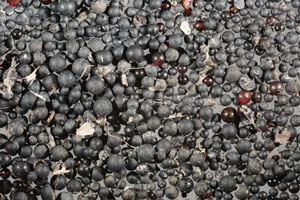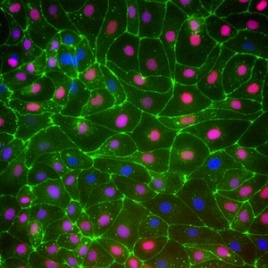
Microbeads collected from St. Lawrence River sediments in summer 2013. (Photo credit: Guy l’Heureux)
Concentrations of microplastic particles in the St. Lawrence are as high as has been observed in the world’s most contaminated marine sediments, a new study shows. This is also the first time such pollutants have been found in freshwater sediments.
The authors dug up microplastics (in the form of polyethylene ‘microbeads’, <2 mm diameter) from the bottom of the river in ten locations between Lake St. Francis, south of Montreal, and Quebec city. At some locations, the researchers measured over 1000 microbeads per liter of sediment.
The effects of ingestions of microplastic by fishes and invertebrates are still poorly understood and warrant further studies the authors conclude.
Original research paper published in the Canadian Journal of Fisheries and Aquatic Sciences on September 3, 2014.
Names and affiliations of selected authors

